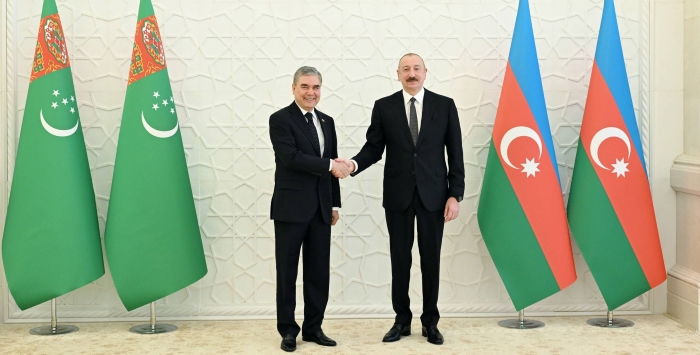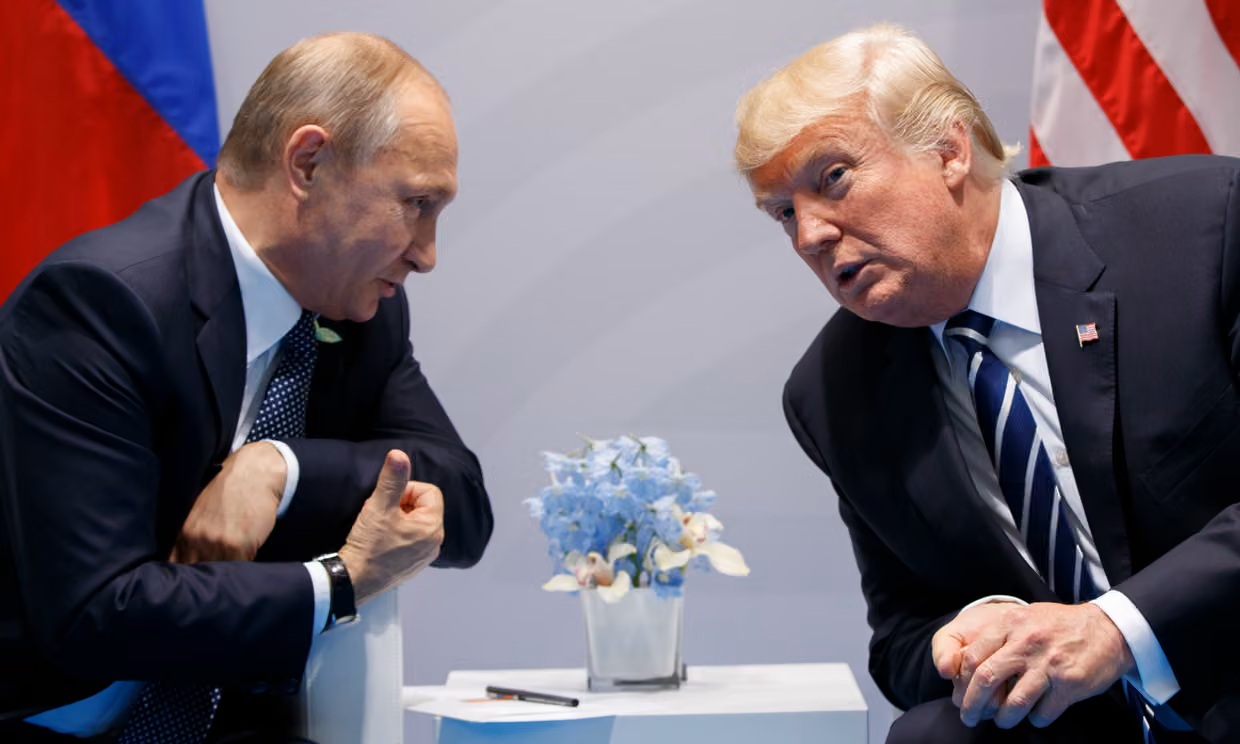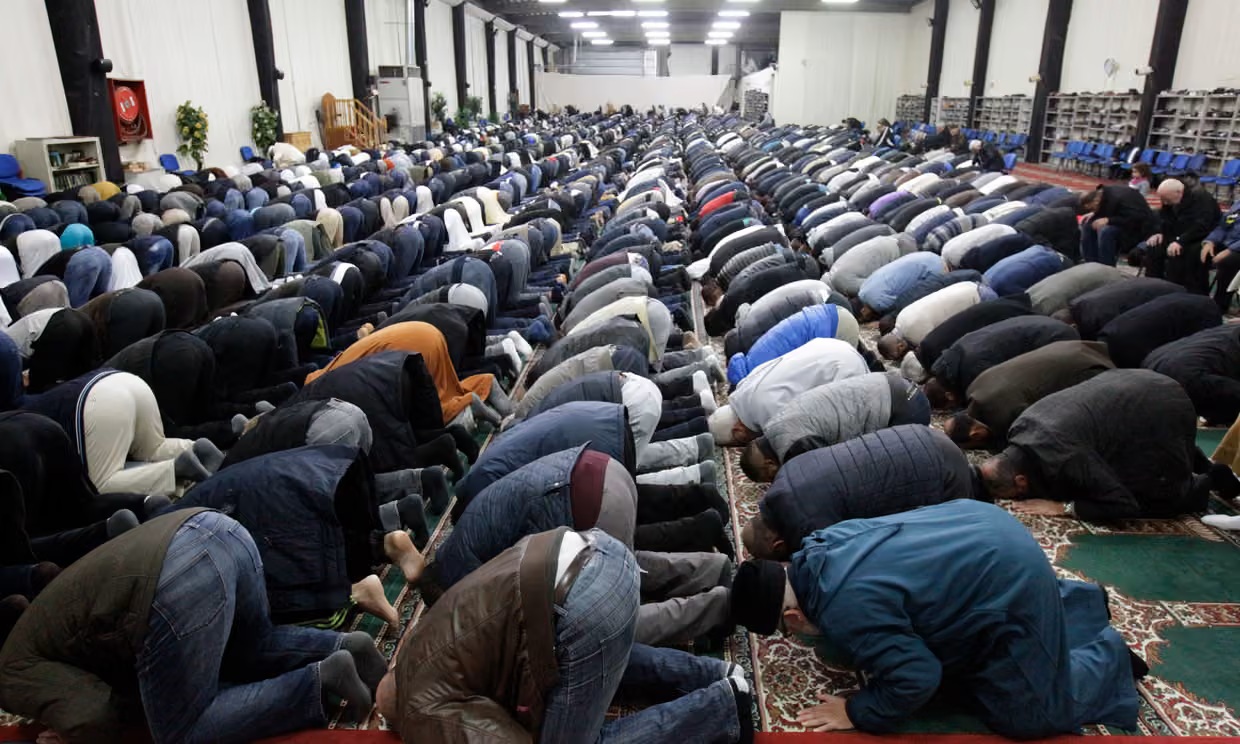
Azerbaijan and Turkmenistan have re-entered a long-interrupted trajectory of strategic engagement in their bilateral relations. This new engagement re-threads a suspended diplomatic filament, reanimating a process that had, until recently, receded into stasis despite its formal resumption in 2021. The agreement was widely perceived as a diplomatic breakthrough, yet substantive progress was stalled.
By Robert M. Cutler
That year’s Memorandum of Understanding (MoU) over the long-disputed mid-Caspian Dostluk oil and gas field. Moves that did not occur in a vacuum; they index broader structural currents reshaping the Caspian and its neighbouring zones.
What distinguishes the past several weeks is not merely the signing of new documents: the official visit of Gurbanguly Berdimuhamedow, National Leader of Turkmenistan and Chairman of the Halk Maslahaty (July 2025), provides the hinge for reopening the bilateral channel. The diplomatic protocol, tied to the projection of intended material joint action, is the symbolic and operational catalyst for the reactivation of convergent bilateral momentum.
Dostluk and the Geoeconomic Basis for Cooperation
The initial foundation for the renewed engagement was laid with the 2021 Memorandum of Understanding (MoU) over the contested but technically delineated Dostluk structure straddling not only maritime boundaries but also historical claims.
After protracted negotiations spanning decades, the two governments reached a compromise allowing for joint exploration and development of a field estimated to contain between 50–100 million tonnes of oil and 30 billion cubic metres (bcm) of natural gas.
This settlement was less a technocratic compromise than a reorientation of geoeconomic vectors, as it enabled Turkmenistan once more to consider westward energy routes; at the same time, it allowed Azerbaijan to confirm its position as a linchpin for the diversification of energy flows to Turkey and Europe.
Even so, implementation faltered as competing regional priorities relegated the MoU to the diplomatic backstage. By mid-2025, however, circumstances changed, with intermediation by Uzbekistan's leadership, whose brokerage reflects a quiet logic of subregional triangulation: the strategic salience of Azerbaijan–Turkmenistan relations came again to the fore.

A series of procedures, long stymied by sequencing inertia, has been activated. Most recently, on 28 July, Baku hosted the eighth session of the Intergovernmental Azerbaijan–Turkmenistan Commission on Economic Cooperation, which convened sectoral working groups on trade logistics, customs harmonisation, port operations, and energy transit. The agenda included proposals for co-managed logistics hubs and integrated multimodal platforms, aiming to reduce redundancies and enhance throughput.
The reactivation of this institutional mechanism, dormant for several years, signals not only renewed political will but also significant progress in the maturation of bureaucratic coordination and economic planning between the two states. The session concluded with the signing of new protocols spanning energy, trade, and transport.
The sides also acknowledged the lingering inefficiencies in documentation chains and the need to coordinate port scheduling along the Caspian littoral. In addition, they agreed to explore the viability of preferential tariff regimes for key commodities, while deliberately leaving ambiguous, at least for the time being, the locus of regulatory authority.
Swap Mechanisms and the Limits of Energy Infrastructure
At present, the operational layer of bilateral energy exchange remains transactional, adaptive, and strategically narrow, albeit pragmatic and forward-looking. A trilateral swap arrangement negotiated in 2021 with Iran established a new source of supply for the Azerbaijani market, avoiding payments problems that plagued Turkmenistan's sales to Iran over the past decade and a half.
A natural gas swap agreement was signed in March 2021 amongst Azerbaijan, Turkmenistan and Iran, whereby Iran imports gas from Turkmenistan for consumption in its northeast and exports equivalent volumes to Azerbaijan. Price disagreements between Iran and Turkmenistan led to the suspension of flows in early 2024. Swap deliveries nevertheless resumed in early 2025, albeit with very low quantities.
Another MoU, in July 2021, provided for Azerbaijan to become a transit country for Turkmenistan's natural gas to reach Turkey: an ambition long voiced but repeatedly rerouted by infrastructural shortfall and hesitance on all sides. It was followed in May 2024 by an actual agreement amongst the three to this effect, although implementation has followed only in quantities more symbolic than scalable.
However, structural constraints remain embedded in the region’s energy architecture, not least the absence of a dedicated full-fledged Trans-Caspian Gas Pipeline (TCGP), which continues to limit the scalability and stability of Turkmen gas flows toward Western markets. Swap arrangements cannot substitute for fixed infrastructure capable of delivering volumes at a commercial scale, and their flexibility masks their fragility.
The combination of longstanding political sensitivities surrounding the Caspian Sea, together with Europe’s repeated gestures of commitment unaccompanied by capitalisation or binding contract, has compelled Turkmenistan to rely on bilateral arrangements that are vulnerable to the volatility of external demand.
South Caucasus–Central Asia Connectivity in Context
Turkey’s energy aspirations present both opportunities and competitive challenges, prompting Azerbaijan and Turkmenistan to cooperate, though not always synchronously, within multiple formats. Nor are they the only ones.
Kazakhstan has substantially increased the throughput of oil exported via the Baku–Tbilisi–Ceyhan corridor, although absolute quantities remain relatively low. Uzbekistan is pursuing a policy of diversified connectivity, combining eastward logistics through China with a growing westward interface via the South Caucasus.
Geopolitical tensions, notably the fallout from Russia’s war on Ukraine, have given new impetus to the Middle Corridor, as countries seek to diversify trade and energy routes away from Russia and Iran. National priorities thus diverge, but their common underlying logic is to embed each country more firmly in alternative corridors bypassing traditional geopolitical gatekeepers.
The Azerbaijan–Turkmenistan cooperation is thus part of a broader regional pattern, in which Central Asian states are iteratively aligning their energy and transport strategies with South Caucasus counterparts, therefore suggesting a resonance, however faint, with the latency embedded in the Dostluk accord.
One of the functional platforms for this cooperation is the Organisation of Turkic States (OTS), which has evolved into a fully-fledged intergovernmental entity encompassing Azerbaijan, Kazakhstan, Kyrgyzstan, Turkey, Uzbekistan, and observer states including Turkmenistan.
The OTS provides a vector-alignment environment with institutional spillover potential for dialogue, economic integration, and shared strategic planning. The organisation’s role complements the bilateral and trilateral mechanisms activated mainly by Azerbaijan, which objectively acts as an integrator of Central Asia, allowing for greater coordination in energy exports, transport investments, and cultural exchange.
Azerbaijan’s coordinating role thus unfolds not by imposition but by subtle yet persistent natural evolution. The current year, 2025, has already seen major summits and new initiatives designed to deepen regional ties.
Meanwhile, Russia has traditionally viewed the Caspian and Central Asia as a sphere of privileged interest; but the Turkic states’ diversification strategies and Western interest in new connectivity render Moscow’s influence uneven, delayed, and increasingly second-order. Interests of South Caucasus actors now intersect the broader vision propagated by China, which meanwhile maintains strong economic ties also with the Central Asian republics; and its Belt and Road Initiative now overlaps with the Middle Corridor, further raising the strategic profile of actors like Azerbaijan and Turkmenistan.
Turkey is expanding its soft and economic power, sometimes eliciting suspicion from Moscow and Beijing, but steadily increasing its relevance. Meanwhile, Western powers, particularly from the European Union, are investing political capital and financial resources in the region. For Azerbaijan and Turkmenistan, this evolutionary geoeconomic complex multiplies not only options alone, but also the angles of entanglement, as they seek to avoid over-dependence on any single outside actor while maximising the benefits of new partnerships and diversified markets.
Bilateral Reactivation in a Networked Context
The handshake in Baku in July 2025 reflects not merely resumed protocol, but a partial collapse of accumulated hesitation. Gurbanguly Berdimuhamedow’s visit broke a period of relative diplomatic stasis between the two countries. The high-level talks signal an intent to deepen trust and mutual understanding and to enhance further dialogue on regional security, while reiterating support for cooperation in international organisations, notably the OTS.
Underlying these developments is a broader phase-change in Eurasian geoeconomics. Russia’s invasion of Ukraine in 2022 and its cascading effects have fractured older alignments and disrupted north–south and east–west continuities, forcing regional actors not into new alliances but into novel operational geometries.
In this evolving context, the reactivation of Azerbaijan–Turkmenistan relations reflects not simply a thaw but an architecture undergoing emergent repair, an inflexion point in the construction of autonomous Caspian-region agency. It recalls earlier, unrealised moments of integration, such as the late-1990s effort to launch a trans-Caspian pipeline or the ephemeral Central Asian multilateralism of the early 2000s.
The current dynamic, however, differs from them in one crucial respect: the multiplicity of vectors now simultaneously in play. Earlier initiatives faltered due to dependence on a single external sponsor or a narrow strategic calculus. The present reconfiguration is marked by polycentric engagements that overlap in rhythm if not always in purpose: a new sort of regional conditionality in the context of layered platforms.
Whether this will yield enduring integration or merely episodic cooperation remains an open question. What is evident, however, is that both Azerbaijan and Turkmenistan are approaching the regional system not as passive actors but as critical architects of a trans-Caspian order still under construction.






